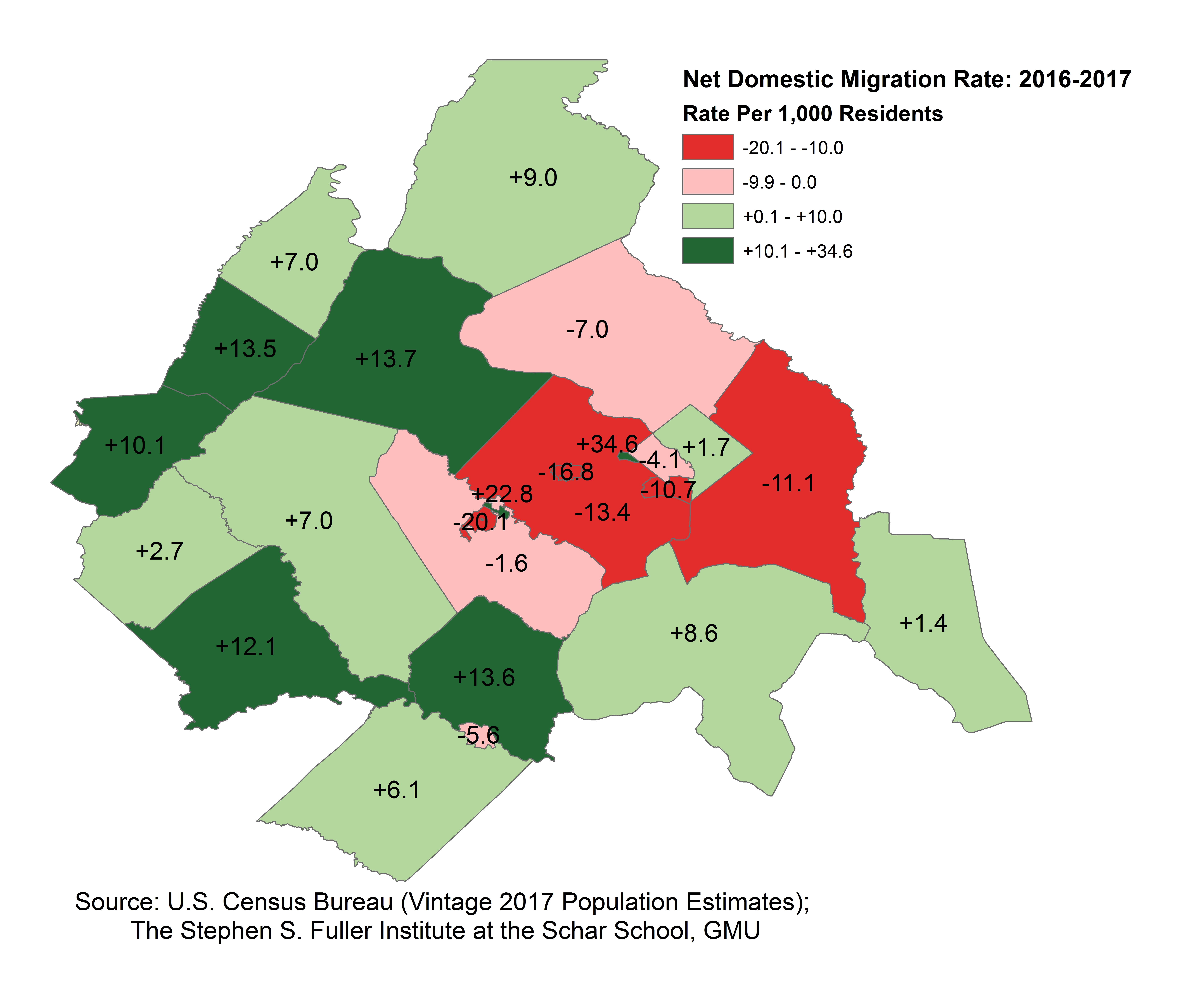From The Washington Business Journal (Subscription required):
Greater Washington’s population may be growing, but it continues to see a net loss of a key demographic — people who already live here.
While the region added 65,910 residents in 2017, it came entirely from births and international immigration, according to data from the U.S. Census Bureau and the Stephen S. Fuller Institute at the Schar School at George Mason University. The D.C. area lost 21,500 people to net domestic migration, which occurs when more people living in the region leave for other parts of the country than arrive here.
It is the fourth year the region saw a net loss of people, according to data from the Institute.
There is some good news. In 2017, the region lost 10,000 fewer residents to net domestic migration than the year before. But it’s still a far cry from 2011, when the region gained 23,900 more people via domestic immigration than it lost.
The deep dive into the region’s population growth comes after the Census Bureau released data showing Greater Washington added more than 580,000 people since 2010. The metro-area population is now 6.21 million, growing from 5.64 million in 2010. It is growing faster than many of the country’s largest metro areas.
The region encompasses the entire D.C. metro area, extending west across Northern Virginia and into Jefferson County, West Virginia, as well as extending into Maryland through Frederick, Charles and Calvert counties.
Net domestic migration went negative in 2013 and it’s stayed there since. Meanwhile, international immigration passed births as the primary growth engine for the region in 2016, and continued that way in 2017, with 44,800 net international immigrants, compared to 42,600 new births.
As the Washington Business Journal detailed previously, those leaving the region are primarily seeking out better living situations and financial opportunities as Greater Washington’s economy has slowed compared to hotter metro areas across the country.
And for many, when they leave they don’t go too far, with Baltimore one of the top destinations.
Jeannette Chapman, deputy director and senior research associate at the Fuller Institute, said it’s hard to draw sweeping conclusions from a single year. That said, job growth in metro areas to which we normally lose people slowed to about 2 percent in 2017, which translates into fewer people leaving.
“The job growth numbers seem to be a really good benchmark,” Chapman said. “If the trend continues down it seems likely that the losses will continue to moderate.”
In 2017, suburban Maryland lost 13,740 more people to net domestic migration, the most in the region but milder than the 17,300 residents lost in 2016. Northern Virginia saw a loss of 9,350 residents, while the District saw a gain of 1,150 residents.
Read the full report here.
View the full story› (Subscription required)
Copyright Washington Business Journal, reprinted with permission

